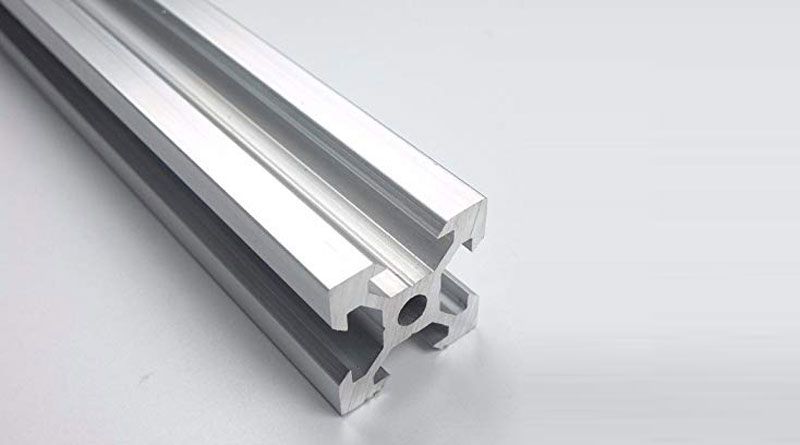Aluminum extrusion has seen substantial growth in application in product production and design over the past few decades. A recent analysis predicts that the worldwide aluminum extrusion sector will expand faster between 2019 and 2023, with a Compound Annual Growth Rate (CAGR) of over 4%.
Maybe you’ve heard of the manufacturing procedure and are interested in learning more about it and how it operates.
Let’s talk about aluminum extrusion now, including its uses.
What is Aluminum Extrusion?
An aluminum alloy substance is forced into a die with a specific cross-sectional shape using the extrusion method. The metal is pushed through the die and out of the die aperture by a powerful ram. When this occurs, it appears in the precise shape of the die and is carried away along a runout table.
Fundamentally speaking, the procedure is a really simple technique. Once you squeeze a toothpaste tube with your hands, the same force is used. When you squeeze the toothpaste tube, it emerges as an aperture. The toothpaste tube’s aperture serves a similar function to the extrusion die.
Whenever corrosion resistance, low weight, strength, beauty, or electrical or thermal conductivity are crucial, aluminum’s intriguing properties make it particularly valuable. It can have any required cross-section that can include various helpful characteristics thanks to extrusion. For instance, tee-slots for securing nuts and reinforcing ribs.
Low cost is also another advantage of aluminum extrusion. You may create extrusion in a significantly shorter time and at a far lower cost than casting or molding. Additionally, the procedure itself has a low operating cost.
Common uses of Aluminum Extrusion
Electrical Systems
Occasionally, you can use extruded aluminum for busbars and other electrical equipment because it’s an excellent conductor. Lighting is another application. Thermal management problems are sometimes present, especially with modern LED lighting.
Fin-extruded aluminum makes a great radiator since it is lightweight when put above the ground, is simple to mount, and you can paint it.
Another example is use of aluminum extrusion in photovoltaic panel support design. These require corrosion-resistance and strength, together with low weight, particularly in roof-mounted panels.
Building Applications
Aluminum extrusions produced by companies like JMA Aluminium are used in various architectural applications, such as railings and fences, building facades, and bleachers. Also, you can use aluminum extrusions in canopies, where the structure needs to be strong, lightweight, and able to handle weights.
Extruded metal offers a desirable uncoated appearance since aluminum doesn’t rust. Interior accents made of aluminum are also incredibly common.
You can use extruded aluminum in various places, including lighting fixtures, elevator shafts, and stairwells. Although aluminum is typically not utilized to construct a building’s core structural framework, you can use it to reinforce the structure inside a building. Additionally, extruded aluminum forms are used in other architectural construction components, including plumbing.
Automobile and Transportation Industries
The reduced weight of aluminum has various uses in the transportation sector, many of which are particularly advantageous. Products, including panels, roof rails, engine blocks, transmission housings, and the chassis of trucks, cars, and boats, are all made utilizing aluminum extrusions. Other components of cars, like their bodies, are also made of aluminum.
Aluminum extrusions are frequently utilized in place of steel to make structural components for reduced-weight automobiles due to aluminum’s high strength-to-weight ratio. Additionally, the car industry can increase dent resistance thanks to this high strength-to-weight ratio. Body panels can be thicker than with earlier steel counterparts, thanks to aluminum’s reduced weight. Thus, a lighter available vehicle is achieved, combined with increased dent resistance.
Aluminum cars’ reduced weight enhances performance. Vehicles made of aluminum accelerate, brake, and manage more nimbly. Aluminum’s rise to prominence in the production of vehicles comes as no surprise.
Long-term resistance to the effects of moisture, corrosive forces from temperature, and road salt is a natural property of aluminum. Radiator enclosures, drive shafts, frame and body components, and cylinder liners are a few examples of car components made from aluminum extrusions.
Take away
You may find metal fiction everywhere when you imagine them as much as experts do. You’ll notice that numerous buildings are constructed utilizing aluminum extrusion.
Researchers enjoy working with it since it’s a material that’s truly incredibly adaptable. Speak with the experts if you consider using extruded aluminum for your upcoming project.

Namaste UI collaborates closely with clients to develop tailored guest posting strategies that align with their unique goals and target audiences. Their commitment to delivering high-quality, niche-specific content ensures that each guest post not only meets but exceeds the expectations of both clients and the hosting platforms. Connect with us on social media for the latest updates on guest posting trends, outreach strategies, and digital marketing tips. For any types of guest posting services, contact us on info[at]namasteui.com.

